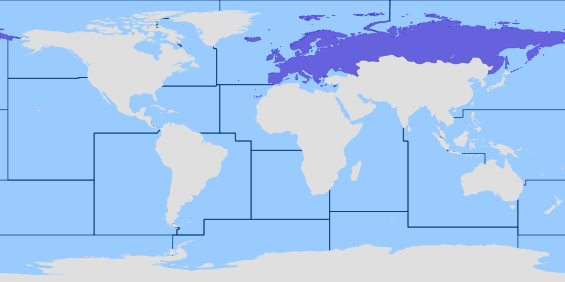inglésCan be distinguished by the following characters: body and caudal peduncle moderately compressed; the minimum body depth is somewhat smaller than the width of the caudal peduncle at the level of the last anal ray in larger specimens and somewhat greater in smaller fishes; the anus is closer to the insertion of the anal fin than to the origin of the pelvic fins; absence of epithelial crests on the dorsal scales and absence of barbellike prolongations at the corners of the mouth; barbels are moderately long, usually extending beyond the anterior edge of the eye (only rarely do they not reach anterior eye edge), sometimes reaching up to the middle of the eye, but never reach to its posterior edge; the barbel length ranges from 15% to 28% of the head length with modal values between 21% and 22%; paired fins are moderately long: pectoral fins never reach the pelvic fin insertion, and their average length varies from 74.7% to 84.8% of the distance between the base of paired fins; ventral fins never reach the anal fin insertion, and their average length varies from 72.8% to 75.7% of the distance between ventral and anal fin bases; there are large, more or less rounded, dark spots located along the lateral line and several rows of small dark spots on the dorsal and caudal fins; large eye with a diameter greater than ¾ of the interorbital distance; the breast in front of the level of the rear extent of the pelvic fin insertions usually lacks scales; the lateral branch of the supraorbital cephalic sensory canal (CSO) is connected with the infraorbital canal behind the eye; usually seven pores in the frontoparietal area of CSO and five pores in the pteroticum; both supra and infraorbital bones are wide: the average width of the supraorbital bone exceeds 40% of its length, and the average width of the last infraorbitals comes to more than half of the bone length (Ref. 76908).
Ver traducción
Traducido del inglés por BING
Esta traducción es meramente orientativa: debido a la cantidad limitada del texto original, las descripciones morfológicas solo están disponibles en inglés en la versión BETA del sistema. En las futuras entregas, la información estará disponible en varios idiomas.
españolPueden distinguirse por los siguientes caracteres: cuerpo y el pedúnculo caudal, moderadamente comprimido; la profundidad mínima del cuerpo es algo más pequeño que la anchura del pedúnculo caudal a nivel del último rayo anal en especímenes más grandes y algo mayor en los peces más pequeños; el ano está más cercano de la inserción de la aleta anal que en el origen de las aletas pélvicas; ausencia de crestas epiteliales en las escalas dorsales y ausencia de prolongaciones barbellike en las esquinas de la boca; barbillas son moderadamente largo, generalmente extendiéndose más allá del borde anterior del ojo (sólo raramente alcanzan no borde anterior del ojo), llegando a veces hasta a la mitad del ojo, pero nunca alcance a su borde posterior; los rangos de longitud de barbo de 15% a 28% de la longitud de la cabeza con valores modales entre 21% y 22%; son moderadamente largas aletas pares: pectorales nunca alcanzar la inserción de la aleta pélvica, y su longitud media varía de 74.7% 84.8% de la distancia entre la base de las aletas pares; aletas ventrales nunca alcanzar la inserción de la aleta anal, y su longitud media varía de 72,8% a 75,7% de la distancia entre la base de la aleta ventral y anal; hay manchas grandes, más o menos redondeados y oscuros situados a lo largo de la línea lateral y varias filas de pequeñas manchas oscuras en las aletas dorsales y caudales; ojo grande con un diámetro superior a ¾ de la distancia interorbital; el pecho delante del nivel de la parte posterior de las inserciones de la aleta pélvica generalmente carece de escamas; la rama lateral del canal sensorial cefálica supraorbital (CSO) se conecta con el canal infraorbitario detrás del ojo; generalmente siete poros en la zona frontoparietal de CSO y cinco poros en el pteroticum; ambos supra y huesos infraorbitario son anchas: el ancho promedio del hueso supraorbital supera el 40% de su longitud y el ancho promedio de la última infraorbitals trata de más de la mitad de la longitud del hueso
 Imagen no disponible
Imagen no disponible